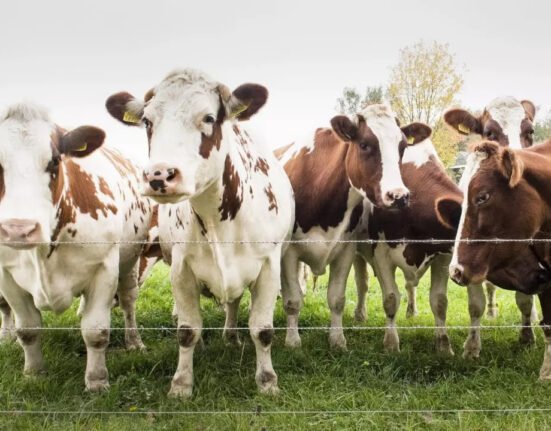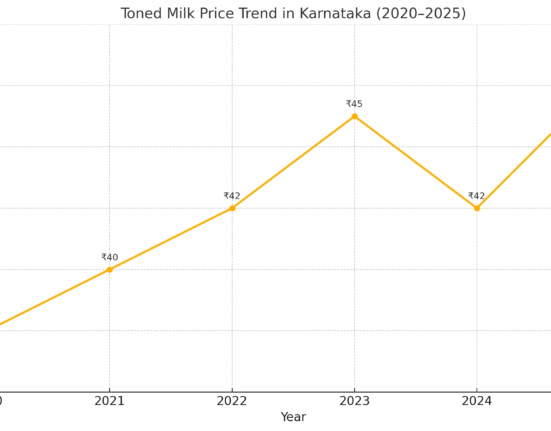In recent weeks, headlines across Europe have celebrated the remarkable surge in beef prices, with Irish beef reportedly hitting €6/kg. This has reignited a perennial question within Ireland’s dairy sector: could liquid milk ever command €1 per litre at the farm gate?
At first glance, it appears unlikely. Dairy pricing operates within a fundamentally different structure from beef. While beef producers benefit from a more fragmented and agile supply chain—often able to capitalise quickly on shifts in demand—dairy remains hamstrung by large capital investments, longer planning cycles, and tight processing constraints. But as European and global markets shift, and high-value product categories become increasingly competitive, it’s time to ask whether Ireland can reimagine its dairy model to pursue higher-value returns.
A Divergence in Sectoral Flexibility
The beef sector’s current pricing strength stems from constrained supply across Europe and buoyant export demand, particularly for premium cuts. Processors have responded rapidly, with prices rising in tandem. In contrast, Ireland’s dairy sector has built significant structural rigidity into its business model.
Over the past decade, co-operatives like Dairygold and Lakeland Dairies have invested heavily—both in stainless steel and in brand equity. These investments expanded milk intake and baseline processing capacity. Yet this scale hasn’t translated into margin-rich innovation. For example, while global prices for whey protein isolate (WPI) hover around €25,000/tonne, most Irish processors remain unable to pivot from commodity powders to such specialised, high-margin ingredients.
Barriers to Strategic Uplift
The potential is real, but so is the cost. To produce WPI or other high-functionality proteins at scale, experts estimate that Irish co-ops would require an additional €100–€200 million in processing infrastructure. In today’s financial climate—with increased interest rates, inflationary pressures, and looming environmental compliance costs—such capital investments are difficult to justify, let alone finance.
Meanwhile, larger continental players are already consolidating and outpacing Irish firms. A recent proposed merger between Germany’s DMK and Denmark’s Arla would create a 20-billion-litre dairy giant, unlocking scale efficiencies and investment muscle that could reshape the European dairy landscape. Such consolidation gives them a clear edge in both product innovation and market reach—particularly in Asia, where demand for high-purity dairy proteins and health-functional ingredients is booming.
Environmental Policy Adds Another Layer of Risk
Beyond economics, Ireland’s dairy sector faces growing uncertainty from regulatory headwinds. The European Commission’s scrutiny of Ireland’s nitrates derogation is a case in point. Should the derogation be reduced or revoked, the impact could be swift and severe. Dairygold, for instance, could see an annual milk supply contraction of 200 million litres—posing a dual threat to its processing model and to farmer incomes.
This scenario not only jeopardises processing efficiency but also weakens Ireland’s position as a reliable supplier in export markets. In sectors where consistency and scale drive procurement decisions—such as infant formula and sports nutrition—such volatility could erode buyer confidence.
The Strategic Case for Collaboration
If Ireland wants to target a €1/litre farmgate milk price—or even sustainably improve margin per litre—co-operation must evolve beyond romantic notions of co-ops and into real strategic alliances. This means shared infrastructure for advanced processing, unified approaches to environmental sustainability, and a common voice in EU-level policy debates.
The industry’s future hinges on its ability to create value, not just volume. Instead of maximising litres, Ireland must pivot to maximising value per litre through:
- Functional dairy ingredients
- Climate-smart branding
- Premium international positioning
- Data-led supply chain efficiency
Equally important is a reframing of milk pricing logic. A €1/litre price may not come from selling liquid milk alone but from the value locked in its derivatives—be it bioactives, nutraceuticals, or precision nutrition ingredients.
Market Implications
The ripple effects of such a shift would be far-reaching:
- Farm-level profitability would stabilise, improving generational renewal.
- Co-op consolidation or strategic alliances would become more likely, driven by the need for pooled resources.
- Innovation investment would accelerate, unlocking new export channels.
- Labour and talent would be more attracted to a dynamic, forward-looking dairy sector.
- Environmental compliance would be more integrated into commercial strategy, not treated as an external threat.
In short, the €1/litre aspiration isn’t a fantasy. It’s a challenge—a challenge that demands a re-engineering of how Ireland processes, markets, and governs its most iconic sector.
The real question isn’t “Is €1/litre possible?” but “What are we willing to change to make it happen?”







